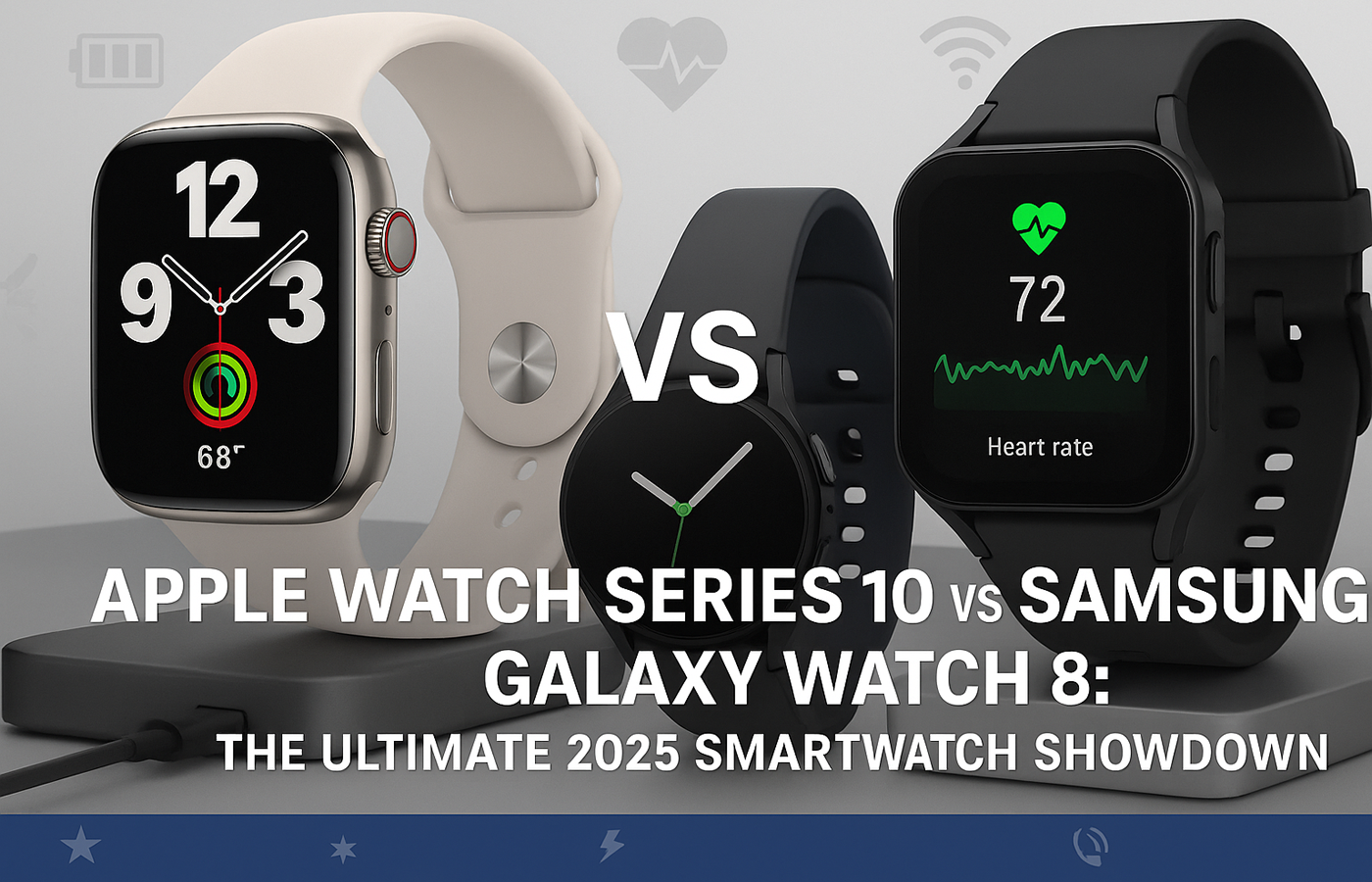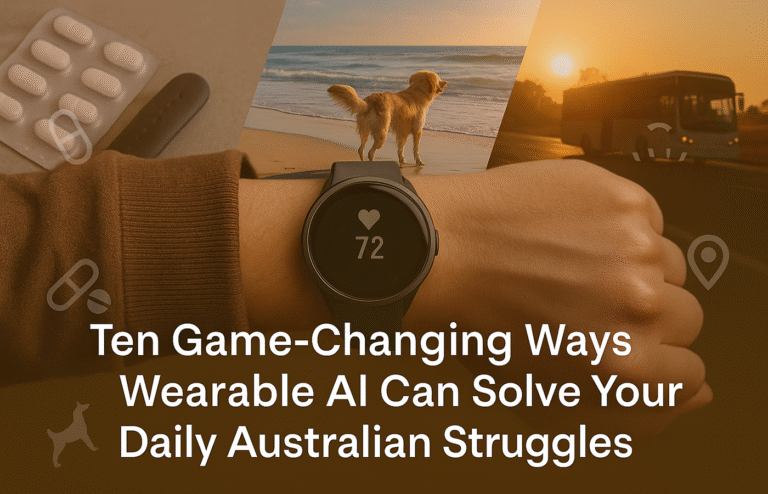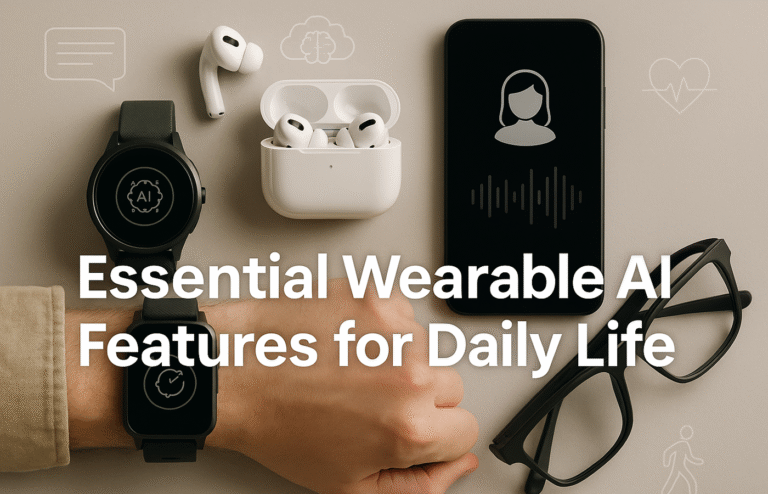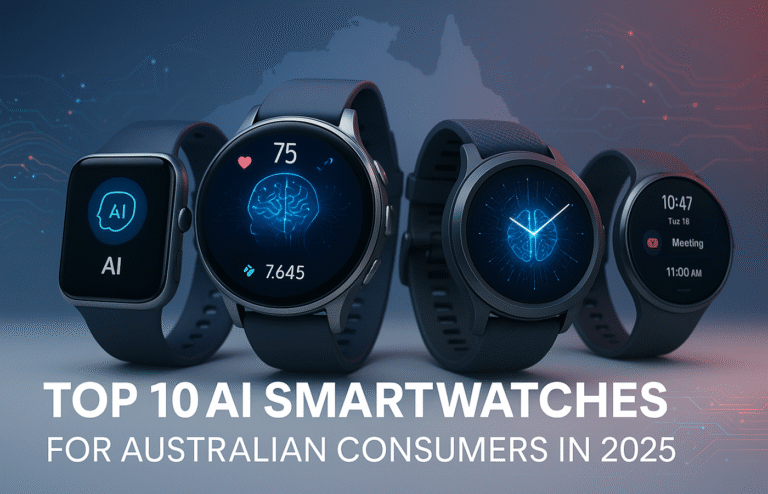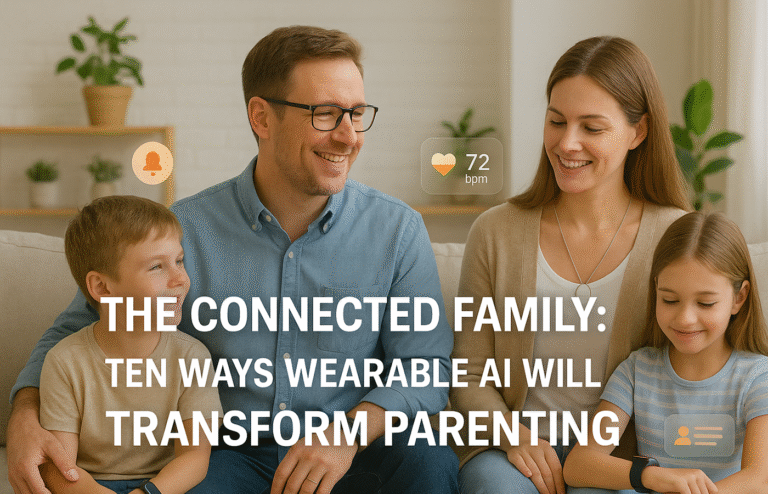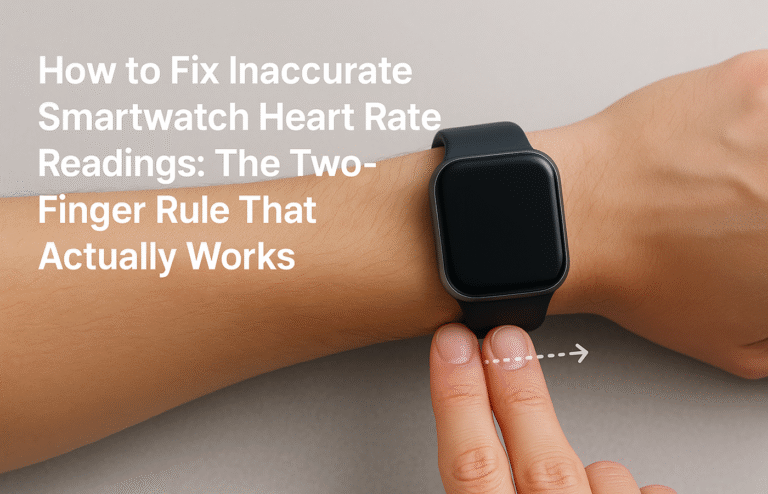Apple Watch Series 10 vs Samsung Galaxy Watch 8: The Ultimate 2025 Smartwatch Showdown
Two flagship smartwatches represent different philosophies: Apple’s refined ecosystem integration versus Samsung’s innovative features and bold design changes for 2025.
Design Philosophy:
● Apple maintains iconic rectangular design with 42mm/46mm sizes and premium aluminium/titanium materials
● Samsung adopts revolutionary “squircle” design (square with rounded corners) housing circular display, 40mm/44mm variants
Key Differentiators:
● Battery: Samsung offers 30-40 hours versus Apple’s 18 hours with faster charging
● Health: Apple focuses medical-grade accuracy; Samsung introduces Antioxidant Index and Vascular Load monitoring
● AI: Samsung integrates Google Gemini coaching; Apple emphasises Siri and machine learning optimisation
Australian Pricing:
● Apple starts $629 AUD with superior carrier support and Apple Pay integration
● Samsung starts $549 AUD offering better value with Android compatibility
Choice:
Apple for iPhone ecosystem users prioritising medical accuracy; Samsung for Android users wanting innovation and battery life.
Apple Watch Series 10 vs Samsung Galaxy Watch 8: The Ultimate 2025 Smartwatch Showdown
Two flagship smartwatches have emerged as the definitive choices for 2025: Apple’s refined Series 10 and Samsung’s revolutionary Galaxy Watch 8. Both devices represent the pinnacle of their respective ecosystems, yet they take distinctly different approaches to wearable technology. For Australian consumers navigating this competitive landscape, understanding the nuanced differences between these premium offerings becomes crucial for making an informed investment.
The stakes have never been higher in the smartwatch arena. Apple’s Series 10 builds upon years of ecosystem refinement, whilst Samsung’s Galaxy Watch 8 introduces bold design changes and cutting-edge AI integration. Each device targets different user priorities, from seamless iPhone integration to Android versatility, creating a fascinating comparison that extends far beyond simple specifications.
Design Revolution: Traditional Meets Innovation
The most striking difference between these smartwatches lies in their fundamental design philosophy. Apple maintains its iconic rectangular approach with the Series 10, featuring a larger 46mm option alongside the traditional 42mm size. The device showcases Apple’s signature curved edges and premium materials, including aerospace-grade aluminium and titanium variants. The Retina OLED display delivers exceptional clarity with variable refresh rates from 1Hz to 60Hz, optimising battery efficiency whilst maintaining smooth animations.
Samsung has taken a dramatically different path with the Galaxy Watch 8, abandoning the traditional circular design for a “cushion” or “squircle” approach—essentially a square with rounded corners housing a circular display. This design language, borrowed from the Galaxy Watch Ultra, creates a more modern aesthetic whilst providing additional surface area for sensors and components. Available in 40mm and 44mm variants, the Watch 8 features sapphire crystal glass protection and measures just 8.6mm thick, making it 11% slimmer than its predecessor.
The design choices reflect deeper philosophical differences. Apple prioritises consistency and seamless integration with existing design languages, whilst Samsung pushes boundaries with bold new aesthetics that challenge traditional smartwatch conventions. Both approaches have merit, though the Samsung design may polarise users accustomed to conventional watch appearances.
Performance and Processing Power
Under the bonnet, both devices showcase impressive technological capabilities. The Apple Watch Series 10 utilises the S10 SiP (System in Package), featuring Apple’s custom silicon optimised specifically for wearable computing. This processor delivers exceptional energy efficiency whilst supporting demanding features like real-time health monitoring and seamless app switching.
Samsung’s Galaxy Watch 8 employs the Exynos W1000, a 3nm chipset that represents Samsung’s latest advancement in wearable processing. The device includes 2GB of RAM and 32GB of storage (compared to 64GB in the Classic variant), providing ample space for apps and data. Both processors deliver smooth performance, though Apple’s tighter hardware-software integration typically results in more consistent user experiences.
The performance differences become apparent in real-world usage. Apple’s optimisation allows for faster app launching and more fluid animations, particularly when interacting with native applications. Samsung’s approach provides greater multitasking capabilities and supports more complex background processes, making it particularly effective for users who demand extensive customisation options.
Health Tracking: Precision Versus Innovation
Health monitoring represents a critical battleground for both devices, though each takes a distinct approach to wellness tracking. The Apple Watch Series 10 continues Apple’s medical-grade precision focus, featuring FDA-approved health sensors and tight integration with healthcare providers. The device includes ECG monitoring, irregular heart rhythm notifications, and the new sleep apnea detection feature that leverages accelerometer data to identify breathing disturbances during sleep.
Samsung’s Galaxy Watch 8 introduces several innovative health features that extend beyond traditional metrics. The standout addition is the Antioxidant Index, which measures carotenoid levels in your skin to provide insights into dietary habits and overall wellness. Users place their thumb on the sensor for five seconds to receive colour-coded results indicating antioxidant status. Additionally, the Vascular Load feature monitors stress levels on your cardiovascular system during sleep, providing comprehensive wellness insights.
Both devices excel in fundamental health tracking—heart rate monitoring, sleep analysis, and fitness tracking—though their approaches differ significantly. Apple focuses on clinical accuracy and healthcare provider integration, making it ideal for users who want medical-grade data sharing with physicians. Samsung emphasises holistic wellness insights and preventive health measures, appealing to users interested in lifestyle optimisation rather than medical diagnosis.
Real-world testing reveals interesting performance differences. In controlled step-counting tests, the Apple Watch Series 10 demonstrated slightly higher accuracy, typically coming within 1-2% of manually counted steps. The Galaxy Watch 8 showed good accuracy but occasionally overestimated activity, particularly during brief movement periods. However, Samsung’s sleep tracking proved more comprehensive, offering detailed analysis of sleep stages and personalised recommendations through the Bedtime Guidance feature.
Battery Life: Endurance Versus Convenience
Battery performance represents one of the most significant practical differences between these devices. The Apple Watch Series 10 maintains Apple’s traditional 18-hour battery life rating for normal usage, though real-world performance often varies based on usage patterns. The device excels in charging speed, achieving 0-80% charge in just 30 minutes—a substantial improvement over previous generations.
Samsung’s Galaxy Watch 8 offers superior endurance, with the standard models providing approximately 30 hours of battery life with always-on display enabled. The Galaxy Watch 8 Classic extends this to roughly 40 hours, making it substantially more practical for extended use or travel scenarios. However, charging takes longer, requiring approximately 45-60 minutes for a complete charge cycle.
For Australian users, these differences have practical implications. The Apple Watch’s fast charging makes it suitable for users who maintain consistent daily routines and can quickly top up during showers or morning routines. Samsung’s extended battery life appeals to users with irregular schedules, frequent travellers, or those who prefer not to worry about daily charging cycles.
AI Integration and Smart Features
Artificial intelligence represents a major differentiator in 2025’s smartwatch landscape. Apple’s approach centres on Siri integration and machine learning optimisation for health insights and usage patterns. The watch learns from your behaviour to provide proactive suggestions and automate routine tasks, though the AI feels more background-focused than prominently featured.
Samsung’s Galaxy Watch 8 takes a more aggressive AI approach, featuring built-in Google Gemini integration as a headline feature. Users can activate Gemini through voice commands or the physical button, enabling natural language requests like “start a 300-calorie circuit training workout” or “find the nearest gym.” The integration feels more conversational and capable than Siri’s implementation, though it requires reliable internet connectivity for optimal performance.
The Running Coach feature exemplifies Samsung’s AI advancement. After a 12-minute assessment run, the system analyses your performance, assigns a fitness level (1-10 scale), and creates personalised training programmes spanning 3-5 weeks. The feature provides real-time coaching during workouts and motivational feedback post-exercise, representing a significant advancement over traditional fitness tracking.
Ecosystem Integration and Compatibility
Ecosystem compatibility remains the most crucial factor for many users. The Apple Watch Series 10 requires an iPhone running iOS 17 or later, creating a seamless but exclusive experience. The integration extends to AirPods, Mac computers, and other Apple devices, enabling features like automatic unlocking, Handoff functionality, and universal clipboard sharing. This tight integration creates genuine productivity benefits for users invested in Apple’s ecosystem.
Samsung’s Galaxy Watch 8 offers broader compatibility, working with Android devices running version 8.0 or later with at least 1.5GB of RAM. Whilst the experience is optimised for Samsung Galaxy smartphones, the watch provides substantial functionality with other Android brands. iPhone compatibility is limited to basic notifications and fitness tracking, making it impractical for iOS users.
For Australian users, ecosystem choice often determines long-term satisfaction. Apple’s approach delivers superior integration for users already committed to iPhone and Mac usage, whilst Samsung provides flexibility for Android users who may change smartphone brands or prefer broader device compatibility.
Australian Market Considerations
Local factors significantly influence the practical value of each device for Australian consumers. The Apple Watch Series 10 starts from an RRP of $629 AUD for the 42mm GPS model, with cellular variants adding approximately $130 AUD. Samsung’s Galaxy Watch 8 starts from $549 AUD for the 40mm Bluetooth model, making it more accessible whilst still offering premium features.
Carrier support varies considerably. Apple maintains strong partnerships with all major Australian carriers—Telstra, Optus, and Vodafone—ensuring reliable eSIM activation and ongoing support. Samsung’s carrier support is improving but remains less comprehensive, particularly with smaller carriers or specific plan configurations.
Local warranty and support considerations favour Apple, with dedicated Apple Stores in major cities and extensive authorised service networks. Samsung provides warranty support through major retailers and service centres, though the experience can be less consistent across different locations.
Payment integration shows interesting differences. Apple Pay enjoys near-universal acceptance across Australian retailers, from major chains to small businesses using contactless terminals. Samsung Pay provides good coverage but may encounter occasional compatibility issues with older payment systems.
Health System Integration
Australia’s digital health landscape presents unique considerations for wearable integration. Apple Health demonstrates superior compatibility with MyHealth Record and major private health insurer applications. The platform’s medical-grade certifications facilitate data sharing with healthcare providers, making it valuable for users who want wearable data included in medical consultations.
Samsung Health offers extensive health tracking but requires more manual intervention for healthcare system integration. The platform excels at comprehensive wellness insights and lifestyle recommendations but may need additional steps for medical data sharing. However, Samsung’s holistic approach to wellness monitoring—including stress tracking, nutritional insights, and sleep optimisation—appeals to users focused on preventive health rather than medical diagnosis.
The Verdict: Choosing Your Champion
The choice between Apple Watch Series 10 and Samsung Galaxy Watch 8 ultimately depends on your existing ecosystem, usage priorities, and personal preferences. Each device excels in different areas, making them suited to distinct user profiles.
Choose the Apple Watch Series 10 if:
- You’re deeply invested in the Apple ecosystem with iPhone, Mac, or other Apple devices
- Medical-grade health tracking accuracy is your priority
- Fast charging convenience outweighs extended battery life
- Seamless ecosystem integration justifies the premium pricing
- You value proven long-term software support and regular updates
Choose the Samsung Galaxy Watch 8 if:
- You use Android devices and want broad compatibility
- Extended battery life is crucial for your lifestyle
- You’re interested in innovative health features like antioxidant tracking
- AI-powered fitness coaching appeals to your wellness goals
- Value pricing and feature diversity are important factors
Both devices represent excellent choices within their respective ecosystems. The Apple Watch Series 10 delivers the refined experience Apple users expect, with premium build quality and seamless integration justifying its higher price point. Samsung’s Galaxy Watch 8 offers innovative features and superior battery life at a more accessible price, making it an compelling choice for Android users seeking cutting-edge wearable technology.
For Australian consumers, the decision often comes down to smartphone ecosystem loyalty and specific feature priorities. Both devices provide excellent health tracking, robust app ecosystems, and premium build quality. The key lies in understanding which approach—Apple’s refined integration or Samsung’s innovative features—better aligns with your lifestyle and technological preferences.
As the wearable market continues evolving, both companies have established strong foundations for future development. Whether you choose Apple’s ecosystem precision or Samsung’s innovative features, you’ll be investing in a premium smartwatch that represents the current pinnacle of wearable technology.

